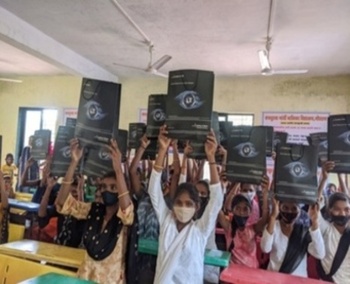Creating Functional Literacy with Improved Rural School Infrastructure

The National Literacy Mission defines literacy as ‘acquiring the skills of reading, writing and basic math and the ability to apply them to one’s regular life’. However, there is a huge difference between being literate and being able to use the knowledge effectively. This is all the more important in rural parts of India, where just the ability to read and write might not be enough.
This is where the approach to education in rural areas needs to be altered – the focus needs to drive towards functional literacy.
How education and rural school infrastructure both need to evolve
When we are talking about literacy in rural areas, there are several factors in play – first and foremost, schools need to have proper infrastructure to ensure that children are able to attend school properly. There are several hindrances – from the lack of steady and constant electricity, access to clean water, and safe, functional classrooms.
And in case, despite all this, children are able to attend school, the education they receive is often not sufficient. Rather than just learning how to read and write, there is a need for activities that support the gaining of functional literacy.

The need for functional education in rural areas
More than just being literate, it is important that the youth of country are able to use the knowledge they gain at school in real life. Functional literacy goes beyond the ability to read and write – it encompasses skills that allow individuals to effectively engage in their daily lives, make informed decisions, and contribute meaningfully to society. For students in rural India, achieving functional literacy is a stepping stone to breaking the cycle of poverty and achieving upward mobility.
Functional literacy involves the practical application of literacy skills in real-life situations, such as:
- Reading a bus schedule
- Understanding prescription instructions
- Using technology, such as a smartphone or computer
- Writing a simple letter or filling out a form
- Performing basic financial transactions, like budgeting or calculating change
● Interpreting information on signs, notices, or advertisements
There are some key aspects of functional literacy:
- It equips people to handle day-to-day tasks independently, enhancing their ability to navigate the world.
- Functional literacy includes comprehension and decision-making skills, such as understanding a bank statement or reading a form and filling it correctly.
- It empowers people to engage with their community and access opportunities, such as applying for jobs or participating in democratic processes.
And here are some reasons why functional literacy matters:
- Literate individuals are better able to access healthcare, manage personal finances, and support their children’s education.
- Functional literacy builds a skilled workforce, boosting employment opportunities and economic development, eventually contributing to nation building.
- An educated society is generally a lot more socially inclusive, allowing everyone the chance to participate
In contexts like rural India, where educational resources may be limited, fostering functional literacy and improving school infrastructure can significantly uplift communities by addressing real-life challenges through education.


How improved rural school infrastructure connects with functional literacy
So, the main problem in rural schools is often the infrastructure and at Project Chirag, we understand this – our constant endeavours are towards making communities self-reliant. From ensuring a constant supply of electricity through solar panels to bringing clean water and of course, helping out with education as well, there is a lot that we are working towards.
Some of the most common problems related to education in rural areas in India are not really about the actual education, but the infrastructure.
- Many schools in rural areas have massive problems with electricity – when there is no electricity, children might not have sufficient lights or might have to sit in a hot room, without fans. Without electricity, access to technology and interactive learning tools is also restricted.
- Early exposure to literacy skills – Infrastructure that supports preschool or foundational programs helps children develop early literacy skills, setting the stage for functional literacy as they advance in education.
- Access to educational resources – Improved infrastructure should ideally translate into libraries, computer labs, and learning materials, all of which will provide students with tools to practice and enhance literacy skills in real-world contexts.
- Integration of technology – Digital tools and e-learning setups enabled by improved infrastructure expose students to diverse content and practical applications of literacy, like reading instructions, understanding manuals, or navigating digital interfaces.
- Vocational and practical literacy training – Improved facilities can accommodate workshops or training programs focused on teaching practical literacy skills, such as filling out forms, managing finances, or understanding agricultural or healthcare instructions. These are bound to be extremely helpful in later life.
- Support for extracurricular activities – Spaces for activities like reading clubs, storytelling sessions and drama performances help students apply literacy in interactive and practical ways, enhancing their functional understanding.
As we work towards bettering the rural school infrastructure, we at Project Chirag understand that work needs to be done to improve education in rural areas as well. When investments are made in school infrastructure and functional literacy, there is economic empowerment, the health outcomes are much better and of course gender equality becomes a more tangible reality.




